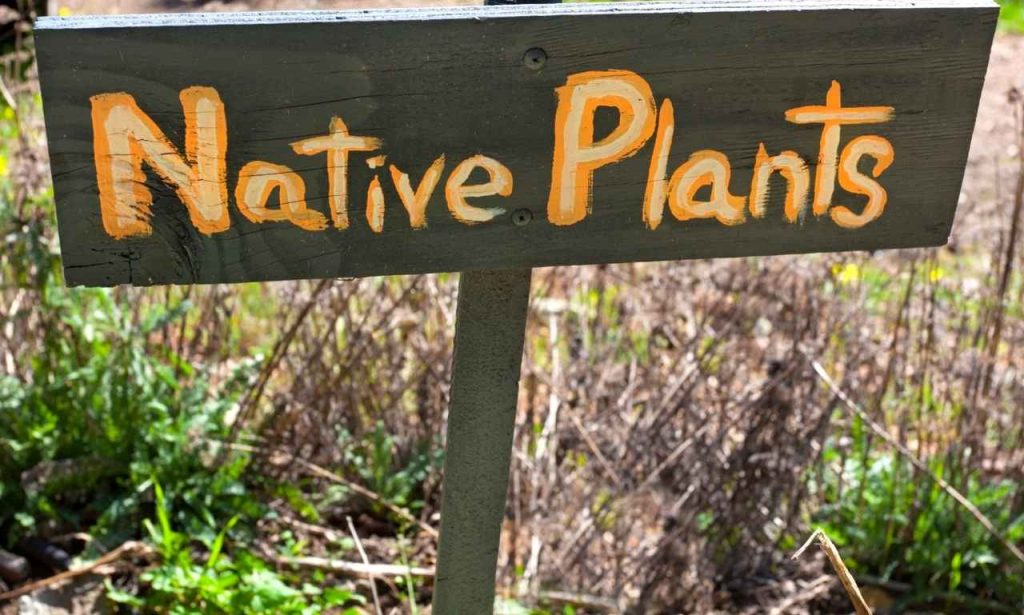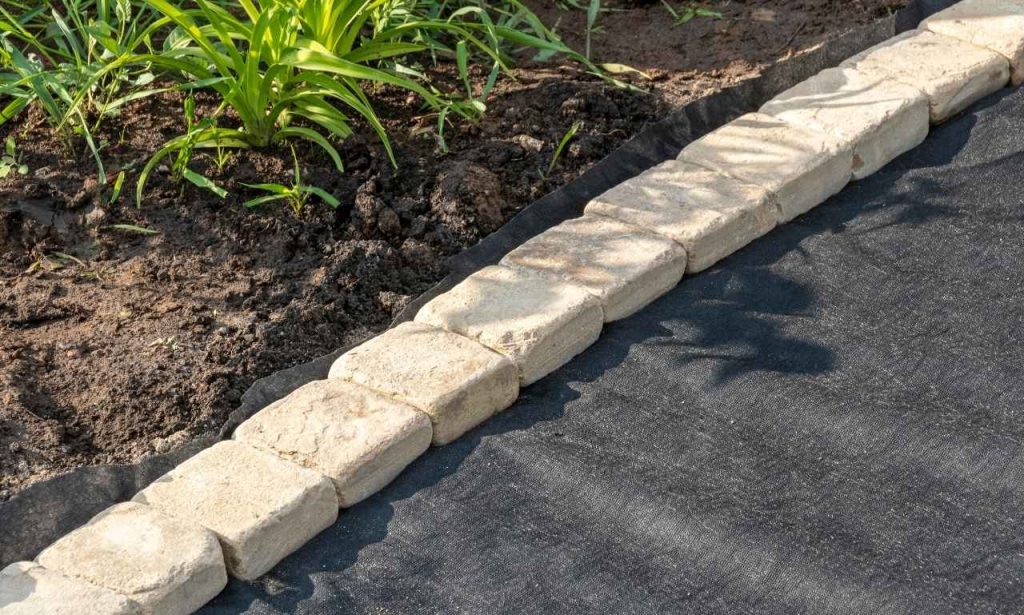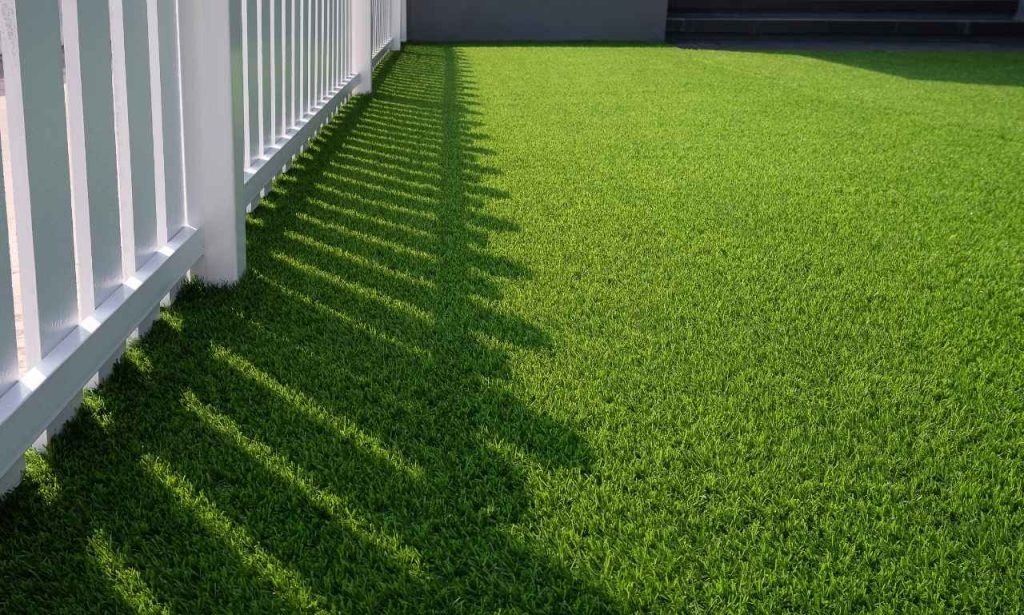Who wants to spend every weekend doing yard work? Beautiful yards don’t require endless work. That’s just what big landscaping companies want you to believe. I will show you how to create gorgeous outdoor spaces that care for themselves. Here are eight low-maintenance landscaping ideas that still feel lush.
Choose Native Plants for Effortless Beauty

Native plants are your secret weapon for low-maintenance landscapes. They’ve spent thousands of years adapting to your local conditions. Why fight nature when you can work with it?
Why Native Plants Thrive with Minimal Care
These plants have already figured out how to handle your local pests, diseases, soil, and weather. They don’t need you hovering over them with fertilizers and pesticides. They’ve got this.
Native plants create natural ecosystems in your yard. They attract beneficial insects that control pests automatically. Birds come for the seeds and berries. Your garden starts maintaining itself.
Best Native Plants for Different Regions
Northeast gardens thrive with black-eyed Susans and purple coneflowers. These tough perennials return year after year without replanting, and the pollinators go crazy for them.
Southern landscapes? Try oakleaf hydrangea or American beautyberry. They laugh at heat and humidity and are multi-seasonally interesting, with flowers, berries, and fall colors.
Midwest homeowners should plant prairie dropseed and butterfly weed. These natives handle brutal winters and scorching summers equally well. Their deep roots improve your soil over time.
Out West? Manzanita and California lilac will be your best friends. They barely need water once established. Their structure looks good year-round, with seasonal flowers as a bonus.
Automate Watering with Smart Irrigation
Water management eats up most of your landscape maintenance time. Smart irrigation technology changes everything.
How Smart Irrigation Saves Time and Resources
Modern systems think for you. They check local weather forecasts and skip watering when rain is coming. Some even monitor soil moisture directly. No more dead plants or wasted water.
Drip irrigation delivers water right to the roots where plants need it. No more spraying water into the air to evaporate. No more encouraging weeds between your plants.
The best systems connect to your home WiFi. You can change your watering schedule from your phone while sitting on the couch. Seasonal adjustments take seconds, not hours of reprogramming.
Best Smart Irrigation Options for Different Budgets
Basic smart controllers start around $100. Rachio 3 and Orbit B-hyve offer solid functionality without breaking the bank. They connect to weather services automatically.
Mid-range options add soil moisture sensors to the mix. These tell your controller when your plants need water, not when you guessed they might. Users typically save 30-50% on water bills.
High-end systems include flow meters and leak detection. They automatically shut down zones if something breaks, and some even learn your landscape’s specific needs over time.
Installation varies in difficulty. Replacing an existing controller is DIY-friendly. Setting up a complex multi-zone system? Call the pros.
Use Hardscaping for a Low-Upkeep Foundation
Hardscaping elements create structure without ongoing maintenance. They’re the backbone of any genuinely low-maintenance landscape.
Incorporating Stones, Pavers, and Other Durable Materials

Natural stone offers incredible durability and timeless appeal. Granite, limestone, and slate get better with age. They’ll outlast everything else in your landscape.
Concrete pavers deliver versatility for less money. Modern manufacturing creates amazingly realistic options, many of which look just like expensive natural materials.
Gravel pathways drain perfectly and naturally suppress weeds. No mowing, no watering, just occasional raking. That satisfying crunch underfoot comes as a bonus.
Metal edging, especially Corten steel, creates crisp landscape lines. It develops that gorgeous rusty patina without structural damage and will contain your plants for decades.
Low-Maintenance Hardscaping Designs That Look Luxurious
Raised beds built from stone or metal elevate your garden literally and visually—less bending for you and better plant drainage. The structures never need maintenance.
Outdoor living spaces with stone flooring extend your home without increasing your workload. There is no mowing or watering, ever, just occasional sweeping.
Simple water features with recirculating pumps create ambiance without hassle. Modern systems require minimal cleaning and electricity. The sound of moving water beautifully masks road noise.
Fire pits become natural gathering spots in any yard. The hardscaping materials handle extreme temperatures without complaint, making them perfect for year-round outdoor enjoyment.
Bring the Holidays Home with Redfin Redesign
Holiday decorating lets you transform your low-maintenance landscape temporarily. Get seasonal changes without permanent commitments.
Seasonal Decor for Low-Maintenance Yards
Container arrangements offer unlimited flexibility. Large pots with seasonal plants create instant focal points, which can be swapped out as the calendar changes.
Weather-resistant fabrics temporarily add color and comfort. Cushions, pillows, and shade sails transform spaces instantly and store easily when not needed.
Solar lighting creates evening magic without complex wiring. Today’s options include string lights, path markers, and spotlights. They charge during the day and work automatically at night.
Quick-assembly structures like pop-up pergolas offer impressive versatility: They can provide summer shade, winter holiday light support, or spring plant hangers. Many assemble without tools.
Mulch and Ground Covers: Set It and Forget It
Proper ground coverage stops weeds and holds moisture. These strategies slash ongoing maintenance dramatically.
Types of Mulch for Different Landscape Styles
Organic mulches feed your soil while suppressing weeds. Shredded bark, wood chips, and pine straw break down gradually. They improve soil structure naturally.
Stone mulches provide permanent coverage. River rock, decomposed granite, and pebbles never need replacement. They work especially well in hot, dry regions.
Rubber mulch from recycled tires lasts practically forever. It doesn’t fade, float away, or break down. The playground-grade material creates safe surfaces for kids.
Cocoa hull mulch smells amazing and looks great. It darkens beautifully when wet, and this natural material stays in place better than many wood mulches.
Ground Cover Plants That Suppress Weeds Naturally
Creeping thyme creates a gorgeous, fragrant carpet in sunny areas. It easily handles light foot traffic, and its tiny flowers attract bees and beneficial insects.
Sedum varieties thrive in terrible soil with minimal water. These succulent ground covers offer endless options, and many provide spectacular seasonal color changes.
Ajuga (bugleweed) conquers shady spots where grass fails. Its dense growth chokes out weeds completely, and the blue-purple flower spikes in spring are just a bonus.
Creeping juniper handles harsh conditions with ease. Poor soil, drought, and erosion-prone slopes don’t faze it. The blue-green foliage looks good all year.
Use Artificial Turf for a Year-Round Green Lawn

Today’s artificial turf barely resembles the plastic-looking stuff from the past. Modern options provide surprisingly realistic alternatives to natural grass.
The Evolution of Artificial Turf Options
Current products use multiple blade shapes, colors, and textures. This variety creates remarkably natural-looking results. Visitors often can’t tell the difference without touching it.
Advanced backing materials allow proper drainage without pudding. Water flows through at rates similar to natural soil. No more muddy messes or erosion concerns.
Installation techniques have improved dramatically too. Professional installation includes proper base preparation and invisible seaming. Today’s turf can last 15-20 years with minimal care.
Many options now include antimicrobial treatments and UV stabilizers. These materials resist fading and bacterial growth and stay safe for children and pets throughout their lifespan.
Sustainable Practices for a Low-Maintenance, Eco-Friendly Yard
Sustainability and low maintenance naturally go hand-in-hand. Earth-friendly approaches often require less work from you.
Rainwater Harvesting and Xeriscaping
Rain barrels and cisterns capture free water for landscape use. Modern designs look attractive with various home styles. Some underground systems invisibly store thousands of gallons.
Xeriscaping principles work everywhere, not just in desert regions. Group plants with similar water needs together. This simple approach maximizes irrigation efficiency dramatically.
Rain gardens naturally capture runoff from hard surfaces. They prevent erosion while creating habitats for beneficial creatures. Once established, they need almost no maintenance.
Wildlife-Friendly Features That Work For You
Bird and pollinator houses provide a habitat for helpful creatures. These features work without human intervention, and the wildlife they attract helps control garden pests naturally.
Native berry-producing shrubs feed birds throughout the seasons. These plants evolved alongside local wildlife. The relationship benefits both the plants and animals.
Water features with biological filtration clean themselves naturally. Plants like cattails and rushes filter water effectively, and these systems maintain themselves with minimal human input.
Achieving a Lush Look with Minimal Effort
Strategic design creates the appearance of abundance without the work. These techniques fool the eye into seeing more than what’s there.
Plant Clustering and Layering Techniques
Plant in masses for maximum visual impact. Groups of five or more of the same plant look intentional and designed. This approach simplifies maintenance significantly.
Layer plants vertically to create the illusion of fullness. Combine ground covers, mid-height perennials, and structural elements. This three-dimensional approach creates depth.
Plan for sequential blooming throughout the season. When one plant finishes flowering, another starts. This strategy ensures continuous color without more plants.
Leave maintenance paths between plant clusters. These access points make occasional weeding and pruning much easier. The negative space enhances planted areas.
Conclusion
Low-maintenance landscaping doesn’t mean sacrificing beauty. The right approach enhances your outdoor space while dramatically reducing work. These strategies free you to enjoy your yard instead of constantly maintaining it.
Start with just one or two ideas that match your specific needs. Native plants and proper mulching give excellent returns immediately. Build from there as you gain confidence.
Consider professional consultation for the initial design. Good landscape designers specialize in sustainable, low-maintenance spaces, and their expertise prevents costly mistakes.
Your gorgeous, low-maintenance landscape awaits. These strategies have transformed thousands of properties nationwide. Imagine enjoying your yard instead of dreading the weekend workload.
Also Read: How to Keep Insects Away from Home Naturally
FAQs
Smart irrigation typically reduces water usage by 30-50% compared to traditional systems.
Creeping sedum varieties thrive in full sun with almost no care after establishment.
Quality artificial turf typically lasts 15-20 years before requiring replacement.
Start with small sections to learn what works in your specific conditions before full conversion.
Combine erosion-control ground covers with terracing and drought-tolerant shrubs for minimal maintenance.




